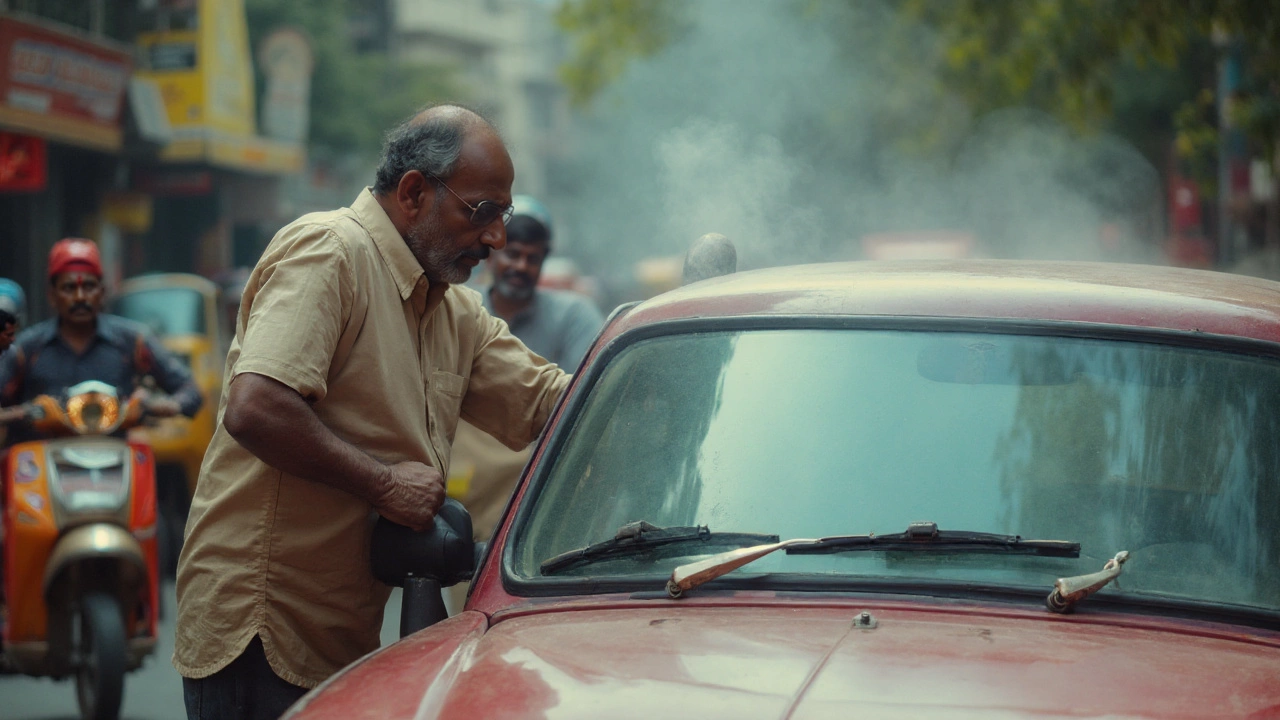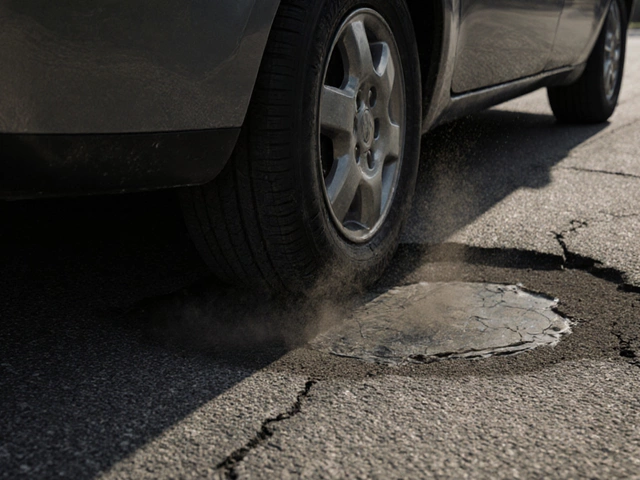Imagine you’re cruising down the Southern Expressway, hot chips on the seat beside you, when out of nowhere, you spot that engine temperature needle edging towards the red. Nothing chucks a spanner in your plans faster. That dreaded rise in engine heat is usually the first whisper of radiator trouble—even though we’d all rather ignore it. Most people don’t realise, but here in Australia, more cars get stranded because of cooling system problems than almost anything else. The humble radiator plays the hero but rarely gets a thank you, quietly taking on Adelaide’s blazing summers and those surprise hailstorms. When it fails, though, you’re left at the mercy of the weather and the mechanic's bill.
Why Your Radiator Matters More Than You Think
The radiator isn’t just a metal box full of mysterious fluid. It’s the backbone of your car’s cooling system, stopping your engine from getting so hot it literally melts bits together. If it’s not pulling its weight, you could end up with warped engine heads, blown gaskets, or the dreaded “total engine failure.” That’s way overkill just because of a dodgy radiator. Here’s what’s really going on: when your engine is running, it’s basically controlled chaos, burning petrol and making loads of heat. The coolant absorbs this heat, then flows through the radiator. Born from simple science, the radiator uses thin pipes and fins to dump heat into the air. With fans blowing and sometimes the sheer thrill of your driving, the heat gets blasted away. The coolant then recirculates, ready for another round.
It all sounds straightforward, but the stuff that hurts radiators can pile up fast. Ever topped up with plain water because you ran out of coolant? That’ll let corrosion build up. Or maybe you park under a tree where bits of bark, leaves, or even insects clog the fins, making it almost useless at keeping things cool. According to RACV, more than 23% of breakdowns linked to engine temperature are down to cooling failures, and that usually comes back to neglect. If you ignore your radiator, you’re not just crossing your fingers—you’re rolling the dice with hundreds, maybe thousands, in repairs.
Let’s get specific: a radiator can last anywhere from 8 to 12 years if you’re lucky and careful. But here in South Australia’s wild climate, with salty air and brutal UV, don’t expect miracles if you never crack the bonnet. The key to avoiding disaster is knowing what to look for and acting before you’re left fuming at the side of the road.

Red Flags That Scream ‘Radiator Trouble!’
You shouldn’t need a mechanic’s toolkit to spot the warning signs. Listen to your car. If it’s babbling, hissing or grumbling louder than usual under the bonnet, that’s clue number one. Strange noises can mean boiling coolant, trapped air, or even the sound of water pump agony—all things that trace back to radiator drama.
While noises play backup, the real headline act is the temperature gauge. If your engine temperature rises well above normal, pull over safely and check things out. Don’t just keep driving and “hope for the best”—that’s a quick ticket to a cooked engine. These days, newer cars might flash a warning light. With older models, you’ll see that temperature needle spiking. Both mean it’s time to investigate.
- Overheating: The most in-your-face sign. If you spot steam spewing from under the bonnet or that gauge won’t sit still, don’t wait.
- Visible leaks under the car, especially a sweet-smelling green, orange, or pink puddle—coolant comes in different colours, but it should never end up on your driveway.
- A sludgy goop inside the radiator cap or in the overflow tank. That’s coolant and oil mixing, thanks to a failing head gasket or an old, rusty radiator core letting one slip into the other.
- If you keep topping up coolant but the reservoir keeps running dry, there’s a leak somewhere—it could be a cracked radiator, loose hose, or faulty radiator cap.
- Rust marks or discoloured streaks on the radiator or surrounding engine bay. That’s telltale for small leaks leaving a rusty trail, hinting at old age or internal rot.
- Thin, bent, or broken fins on the outside. Anything from a flying stone to an unlucky bird can leave your radiator unable to shed heat properly.
For a quick check at home, pop the bonnet—make sure the engine’s cold—and peer into the radiator neck. A healthy radiator lets you see bright, clean coolant. Any brownish sludge, flakes of rust, or gunky stuff means trouble. Give the hoses a squeeze—if they feel crunchy, cracked, or rock-hard, they’re due for replacement. Also, keep your nose tuned. That sweet, syrupy smell is leaking coolant, while a burnt odour can mean overheated parts.
Here’s a handy table of common radiator faults and their symptoms:
| Problem | Obvious Sign | Next Step |
|---|---|---|
| Cracked Core | Leaks, puddles under vehicle | Replace radiator |
| Blocked Fins | Engine overheat, fan on a lot | Clean with gentle water spray or brush |
| Failing Cap | Coolant loss, suction sounds | Replace cap |
| Rust/Corrosion | Brown sludge, murky coolant | Flush system, inspect for internal damage |
| Collapsed Hose | Mushy feeling or bulges in hose | Replace hose, check pressure |
Watch for subtle changes too. Is the heater blowing cold air when you want it hot? That could be an air bubble in the system or clogged heater core—both cycled through the radiator. Noticed poor fuel economy? An engine that runs too hot or too cold (if the thermostat is stuck open) can throw off sensors and fuel mix, costing you at the pump.

Smart Fixes and When It’s Time for a New Radiator
So, you’ve ticked off a few warning signs—now what? First off, not every radiator hiccup means you have to drop cash on a new one. Radiators can sometimes be patched (think small leaks or minor fin bends), but this isn’t always a solid long-term plan, especially if your radiator’s seen better decades. Here in Adelaide, some older Falcons and Commodores are still rolling around with patched-up radiators that really should’ve been swapped years ago. Don’t let a quick fix lull you into motor laziness.
Start simple: flush out old coolant every two years or 40,000km. Use a 50/50 mix of water and good-quality coolant, never just tap water—that’s a recipe for rust. When cleaning the fins, avoid pressure washers; a regular garden hose or a soft brush does the trick. Clean leaves and bugs from the grille (it takes less time than ordering a flat white).
If there’s corrosion that just won’t shift, or all the main symptoms are stacking up—overheating, leaks, sludgy coolant, and steam—don’t waste any more time. A new radiator is the smart play. Modern radiators are designed to be more efficient and last longer than the old copper-brass jobs. Most new models are lightweight aluminium with plastic tanks, and many are a straight bolt-in fit. Labor costs in South Australia for a replacement swing between $350 and $750, depending on the car and whether you’re keen to get your hands dirty or trust a mechanic.
If you decide to do it yourself (and you’re handy with some spanners), here’s a quick rundown:
- Park the car on level ground and let it cool off completely.
- Disconnect the negative battery terminal—might save you a headache later.
- Drain the coolant into a container (never let it hit the ground—local wildlife can be harmed by even a small spill).
- Remove hoses and the fan shroud—label them if it’s your first go.
- Unbolt the radiator, lift it out, fit the new one in place. Watch out—sometimes aftermarket radiators need different fittings.
- Reconnect everything, top up with fresh coolant, and bleed air from the system so you don’t end up with bubbles causing random issues.
After installing, check your system carefully for leaks. Run the engine and check the temperature gauge. Look over all the hoses and clamps one more time. Then take it for a gentle drive and keep an eye on things over the next week. If you’re still getting temperature spikes or strange smells, it means you’ve missed something or another issue is hiding nearby—maybe the thermostat or water pump.
If you’re still weighing up the cost, think about this: an overheated engine can cost $2,000 or more to repair. Replacing a radiator early—often less than a quarter of that price—saves money, stress, and leaves you free to plan your next Maccas run without worrying about a meltdown. It’s one of those rare times in life where prevention really is worth every cent.
Driving around Adelaide’s hills or stopping at Marion with a healthy radiator means a smooth trip and one less worry. Keep tabs on your cooling system, don’t skimp on checks, and your car will pay you back with years of trouble-free drives—no matter how extreme the Aussie weather gets.




